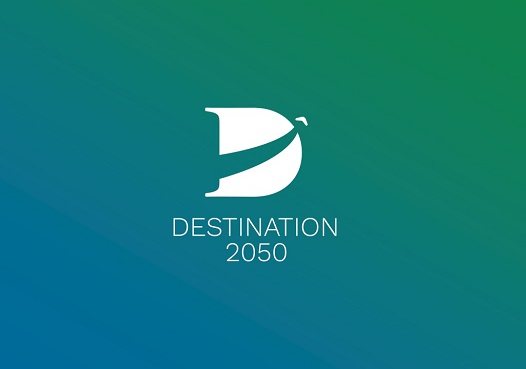EU Sustainable Transport Investment Plan: An important step forward, but significant gaps remain in accelerating Europe’s aviation decarbonisation

Brussels: The European Commission’s Sustainable Transport Investment Plan (STIP) is a constructive step towards addressing the financing and policy challenges of the aviation sector’s net zero transition, noted DESTINATION 2050*, an alliance of aviation partners.
The Plan provides a long-awaited signal to tackle the teething problems of the Sustainable Aviation Fuel (SAF) market in Europe. Yet, the aviation sector remains concerned that the Plan falls short of what is needed to accelerate the decarbonisation of air transport and safeguard Europe’s global competitiveness. Driving the production of Sustainable Aviation Fuels alone would require €100 billion investment by 2035. In this context, the announced potential funding support as part of the STIP appears disappointingly low and not commensurate with the scale of investment required.
DESTINATION 2050 partners commend the Commission’s inclusion of a double-side auction system to stimulate investment and reduce the cost gap for Sustainable Aviation Fuels. This shows growing recognition of the need for market-based incentives to scale up SAF production and uptake. They also welcome plans to consolidate financing instruments to trigger SAF production projects – noting that this will need to extend to advanced biofuels in addition to e-SAF.However, the sector remains deeply concerned by the uncertainty remaining over:
- The timely establishment of a Book & Claim mechanism, one of the most effective tools to ensure SAF accessibility across all EU airports – regardless of local fuel availability. While it is positive that the STIP refers to such a mechanism, the commitment to assess its feasibility and design needs to become a top priority. The industry needs certainty and commitment from the Commission’s side that Book & Claim will be developed and implemented as soon as possible.
- The extension post-2030 and increase in SAF allowances under the EU ETS. While the STIP indicates that the Commission will assess such possibility, it equally falls short of providing the necessary certainty and commitment.
- The absence of targeted support for hydrogen and electric technologies, both of which are vital to achieving aviation’s net-zero by 2050 objective.
Without a coordinated and adequately financed strategy – one that includes a Book & Claim mechanism, expands SAF allowances under the ETS, channels EU ETS revenues into SAF production, and supports multi-year offtake agreements – the EU risks falling short of its own decarbonisation ambitions, undermining its own competitiveness and missing the opportunity to turn sustainable aviation into an economic success story.
DESTINATION 2050 partners welcome the positive signal delivered by the STIP and urge the Commission and Member States to:
– Implement in a timely and coordinated manner all the measures listed in the Plan. The aviation sector stands ready to cooperate and support this endeavour.
– Ensure concrete follow-up both on the Book & Claim design and implementation, as well as the extension of SAF allowances under the EU ETS.
– Increase the funding envelope for aviation decarbonisation measures. Notably, the DESTINATION 2050 partners join the call issued by the Commission to mobilise the European Investment Bank to fund SAF projects.
– Mobilise targeted funding for emerging technologies such as hydrogen and electric propulsion.
– Redirect the left-over funds available at national level under the Recovery and Resilience Funds to renewable and low carbon fuels projects before 31 August 2026.
– Guarantee policy coherence between DG MOVE, DG CLIMA, and DG ENER to provide industry with regulatory stability and investment confidence.
By closing these crucial gaps and working collaboratively between the Commission, Member States and industry, we are confident that the EU can deliver a credible pathway towards a competitive, connected, and climate-neutral European aviation sector.
* A4E, ACI EUROPE, ASD, CANSO Europe, ERA

